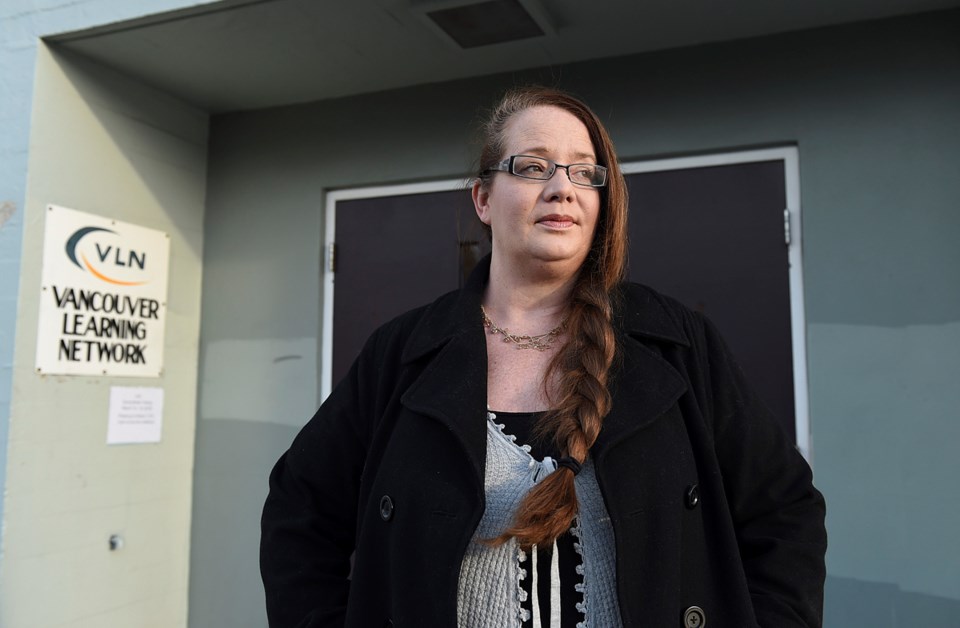The Vancouver School Board’s proposed plan to restructure its online school in order to foster higher student completion rates is meeting opposition from some who say it could actually make it harder for kids to get the help they need.
Vancouver Learning Network (VLN), the VSB’s distributed learning program, services students from kindergarten to grade 12 through its home learners, VLN elementary and VLN secondary schools. Currently, VLN elementary and secondary are located at John Oliver secondary school, but under the proposed restructuring both programs would be decentralized and absorbed by neighbourhood brick-and-mortar schools.
“[Senior staff] review all of our programs on an ongoing basis,” school board chair Mike Lombardi said. “They felt this new restructuring would improve the quality of the programming at VLN and increase completion rates for our online learning.”
Distributed learning in B.C. has a lower completion rate than traditional learning methods, and Vancouver tends to be below the provincial average. Only 52 per cent of students who began a course with VLN in 2014 finished it.
Under the proposed plan, VLN secondary’s central office, which hosts program counsellors and exams, would be moved to Sir Charles Tupper secondary, while the bulk of instruction would be spread out among teachers at four yet-to-be-determined schools and an unspecified number of VLN teachers would become “surplus.”
The hope is increased access to teachers will translate to higher completion rates for VLN secondary students. The bulk of students’ access to teachers remain via email, phone and the online D2L learning management system, however should they want face-to-face time with instructors, they’ll have the option of attending drop-in sessions at any of the four host schools.
Dr. Farah Shroff is 1st vice president of the B.C. Confederation of Parent Advisory Councils and teaches both in person and online as an adjunct professor at the UBC faculty of medicine’s School of Population and Public Health. As an educator and a parent whose children have used distance learning, Shroff said the proposed changes would make it easier for students to get the support they need — support students can’t get from a computer screen.
“One of the most important parts of learning is the relationship that you have with your teacher, and it’s really hard to replace a face-to-face human bond with anything else,” said Shroff. “Having the opportunity to meet your teacher in person, even when you’re doing an online course, can be really helpful for the learning process and can really assist the students in doing better.”
However, not everyone is happy with the plan. Carrie Bercic, an education advocate whose two children were also VLN students, said students have always had the opportunity to meet with teachers at the VLN office.
“The implication that somehow collaborative teaching is not going on, that somehow students are being disserviced by the current model is in my opinion and in my experience totally untrue,” Bercic said.
According to Bercic, decentralizing the program could actually make it harder for many students to access the teachers they need, especially if teachers are only available during regular school hours.
Most students taking courses through VLN are also enrolled in brick-and-mortar schools. Many take online courses to ease pressure on their timetables or to make up courses without falling behind. Others, for example, take courses they need in order to qualify for a particular post-secondary program because they aren’t offered at their physical schools.
Last year there were about 765 full-time students enrolled in VLN out of an approximate total of 4,300. Roughly 1,200 of those students resided outside the Vancouver school district.
“The logistics of it certainly concern me,” said Bercic. “They’re already in regular school, they’re not really going to have time to miss regular school to go somewhere across the city to see a face-to-face teacher.”
Bercic also warned about the potential loss of valuable teaching expertise. She said many of the teachers at VLN have been teaching distance learning for a long time and come with a unique understanding about how students learn in a distance learning model and how to teach the program effectively.
“Just because somebody is computer literate and is willing to do distance learning does not mean that they are qualified to do it,” said Bercic. “Certainly not in the way that teachers at VLN are qualified.”
Lombardi said the surplus teachers will all get an assignment somewhere in the district based on their qualifications and seniority, but disagreed about the loss of distance learning expertise.
“They’re all teachers who are trained as teachers,” he said. “They’re not trained as online teachers, they’re trained to teach a particular subject area.”
The proposal is currently being presented to parents, teachers and administrators for input, and an updated report will be presented at the April 6 meeting of the VSB’s management coordinating committee. If approved, it will be presented to the board on April 18.
@jameswesmith



